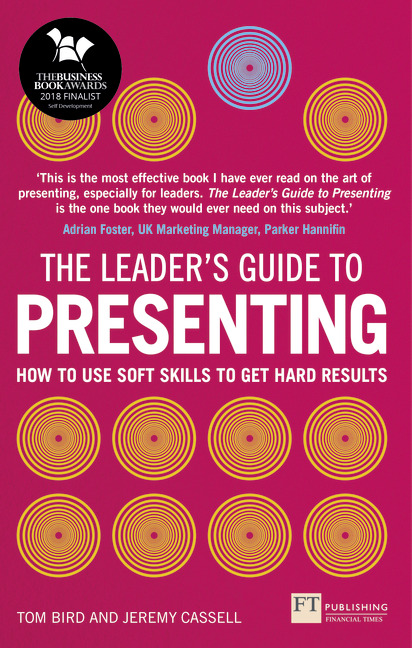I’ve done a fair amount of presentations in my career; sales presentations, change implementation, business strategy, or showcasing work. I know that not all of these have been of the highest standard, and some have not even gone that well. That said, I think some have been ace and I have been energised, feeling a sense of real achievement. For some people I have managed in the past, presenting to a group, especially those with any seniority, fills them with pure dread and nothing can help alleviate that. Showing confidence and establishing credibility is hard.
The more presentation experience we can gain, the easier it is to find our groove: our natural patter. Presentations where the outcome is highly significant or critically important we should do to the best of our ability. Even the most experienced presenters can cut corners, become complacent, even risk ‘winging it’. The experienced presenter also (and I include myself here) may use old presentations rehashed for speed. If a presentation is that important are we letting time stop us from making it truly impactful and successful?
Bird and Cassell are clearly the right people to help ensure you are not getting into a presenting rut and that you can elevate yourself to the next level, the best version of yourself with the most impact. Starting with a sensible focus on the desired outcome of the presentation, it sounds basic but its critical. What do we want people to take away – and what version of YOU will help them to get what they need?
This type of book is very useful to return to when you are putting a presentation together, there is a large part dedicated to the preparation stage, attention getters, conveying detail, maximising interactions. In our busy professional lives time constraints mean we certainly don’t give enough to preparation and of course PRACTICE. Practice is essential, I keep telling my 13-year-old son, but it’s quick to be forgotten or passed up in favour of other priorities.
Without giving away spoilers, I was especially drawn to the WIIFM of presenting – we must ask ourselves on behalf of all the audience – What’s In It For Me? We often are passionate about presenting our topic and forget that there needs to be something in it for the audience to give up their time and give us their attention!
Death by PowerPoint is a messy end to your business objective and no one wants to hear the proverbial groan as you move to slide 58, so the principles that Bird and Cassell formulate help with where to place storytelling, animation, media and key messaging to avoid our key communication being lost and any damage to our reputation is valuable. Especially helpful if you need to present heavy detail financials and complex content.
‘Any Questions? No, good and thank you for listening’. This book also takes on the question about questions, when and how do we handle tough questions? This can be the most stressful part of the presentation and many want to get it over with quickly. But we do need to address them.
There is great guidance in the book for when things go wrong, or when are presenting a challenging or difficult message that may cause a less than positive reaction. No one wants to think the audience might hate an idea or solution, but a presentation is not always met with rapturous applause. Communicating why something is important or requires change can be helped by tapping in to confidence and credibility to help land the message, the book offers not only content guidance but how to use body language and gestures to complete the delivery.
There is a lovely conclusion to the book – what do you do next, sending out the slides? Follow up with people directly. You’ll get some good information on how to ensure you get the best ongoing impact from your delivery after the event has happened. A super useful book for anyone presenting to any type of audience.







